According to statistics, there are more than 3,000 species of snakes in the world. There are many kinds of red snakes. These snakes all belong to the order Reptiles and are reptiles with vestigial limbs. Snakes are covered in scales and are carnivores. Here, we introduce to you the ten most common red snakes. These snakes include milk snakes, Pabra milk snakes, fragrant snakes, purple-grey snakes, red-tailed anacondas, etc. Some of these red snakes are venomous, while others are non-venomous. If you're not familiar with snakes, it's best to keep your distance. Regardless, red snakes are still a very fascinating topic, and many people go to zoos or observe them in the wild to appreciate their beauty and mystery.

1. Milk snake
Milk snakes are a species of snake native to the United States. They often appear in cowsheds and other areas around human settlements. Therefore, they are mistakenly said to like to drink milk secretly, hence the name "milk snakes." In fact, milk snakes are non-venomous and are very popular in the pet snake market. Together with king snakes and corn snakes, they form the Iron Triangle of the Colubridae family, also known as the Yellow Snake family, and are one of the three most popular pet snake species. It should be noted that these colubrid snakes are beneficial to humans because they can control rat populations and reduce crop damage. All in all, the milk snake is not only a very beautiful snake, but also a very useful maintainer of the ecological environment.
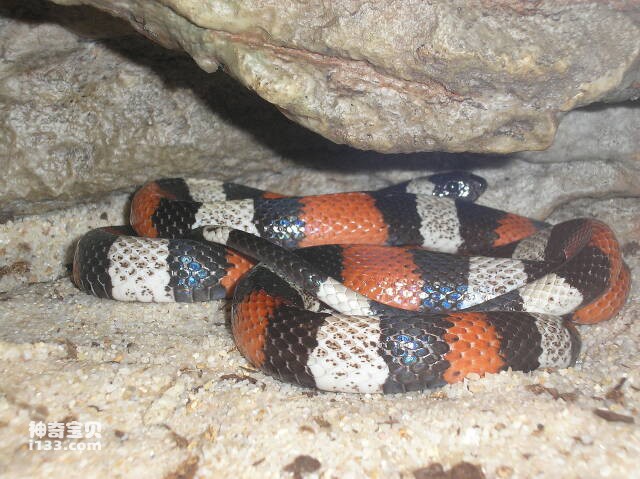
2. Pabra Milk Snake
The Pabra milk snake is a snake that is distributed in Central America, mainly living in Pabra, Moreros, Oaxaca and other regions of Mexico. They mainly inhabit dry grasslands, woods, agricultural lands and wilderness. This kind of snake is not venomous. Its body length is between 70 and 90 centimeters. Its body is slender, its head is oval, and its neck is not obvious, making it difficult to distinguish it from its head. The scales on the body are smooth and shiny, and the end of the tail is very tapered. The front part of the Pabra milk snake's head is usually black, the back of the body is composed of yellow, black, red and black rings, and the tail is composed of alternating yellow and black rings. All in all, the Pabra Milk Snake is a very beautiful, non-venomous snake that deserves to be appreciated and protected.
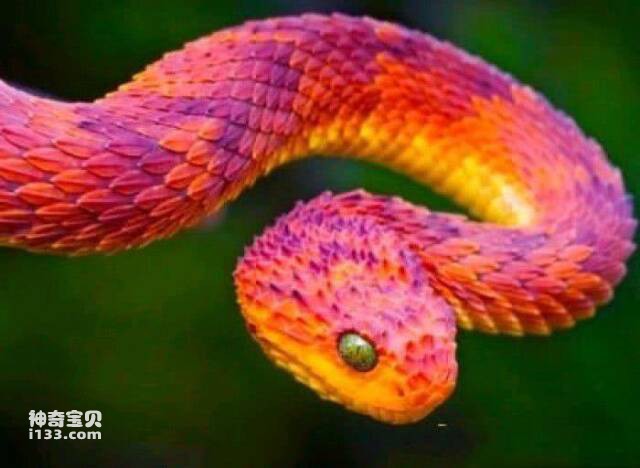
3. Fragrant snake
The fragrant snake is a non-venomous snake that lives in Guyana. It is named after its unique fragrance. This snake's body is covered with dense thorn-like scales, and it can curl up into a flower shape, which is very beautiful. After local residents catch the snakes, they apply glue on them and fix their shapes to use them as window decorations. In addition, the unique fragrance of fragrant snakes also makes them popular among local women. They will coil the snakes into beautiful shapes and hang them on their ears as distinctive earrings. In short, although the fragrant snake is not poisonous, it is loved by locals for its beautiful appearance and unique fragrance, and is widely used in decoration and handicraft making.
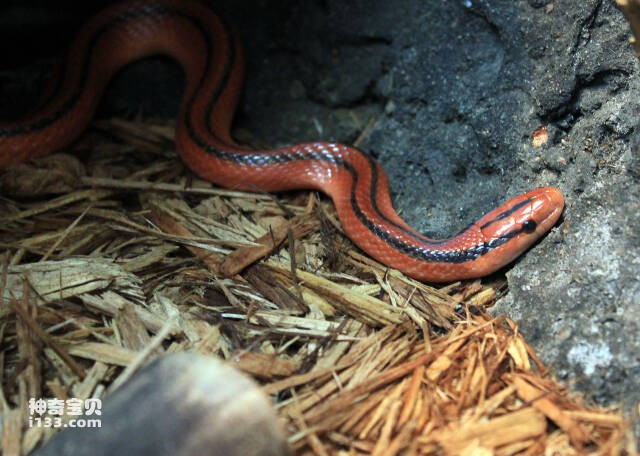
4. Purple-grey snake
Elaphe porphyracea (scientific name: Elaphe porphyracea) is a non-venomous snake. Their backs are copper-colored, and there are three black bands on the back of their heads, extending along their bodies from nose to tail. In addition, there are more than ten saddle-shaped light black horizontal spots on the back of their body and tail, each horizontal spot is about 3-5 scales wide; and the abdomen is jade white. This snake lives in mountains, streams, fields, roadsides and grass, and feeds on small mammals. In short, although the purple-grey snake is not venomous, its unique color and markings make it one of the most beautiful snakes, and it has attracted the love and attention of many people.
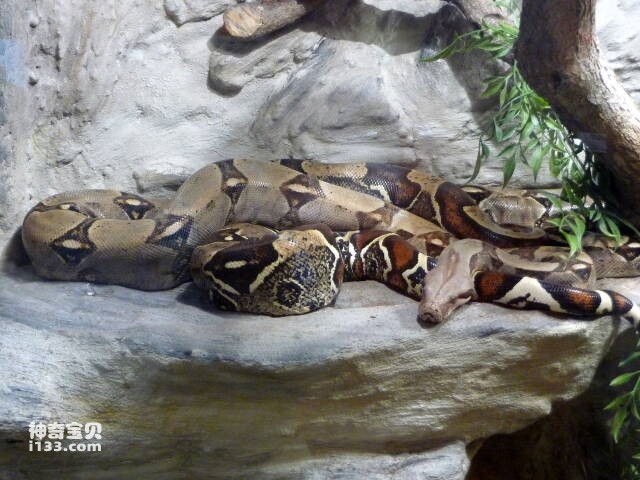
5. Red-tailed anaconda
Red-tailed anaconda (scientific name: Boa constrictor), also known as red-tailed python, is a non-venomous snake with a body length of about 1.8-3 meters and a weight of 10-15 kilograms. It is mainly distributed in Central America, South America and the Caribbean Sea. some islands. They feed on reptiles, mammals and birds and can live up to 20-30 years. This snake comes in many colors and is quite large, making it one of the most eye-catching snakes. 10 subspecies have been recognized so far. In terms of body color, the body of the red-tailed anaconda is usually red or brown, while the tail is brick red. The back is dominated by brown and yellow markings, while the markings on the tail are usually lighter. Now, through artificial breeding, red-tailed boas have shown many different body color expressions, such as albino and salmon. In short, the red-tailed anaconda, as a huge and colorful snake, has attracted people's attention.
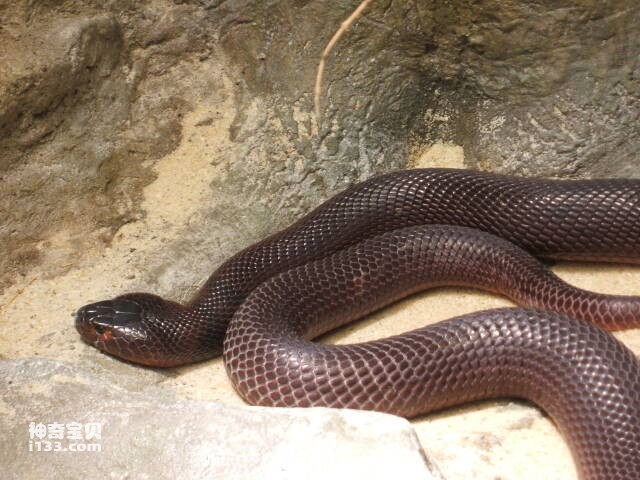
6. Red venomous cobra
The red venomous cobra is a snake with mainly red to gray body color, with a total length of about 70-120 cm and a maximum length of 150 cm. They are one of the few cobras that can shoot venom. When in danger, they can spray venom at the enemy through the pores at the tips of their fangs, and their range can even reach two meters away. Although their venom causes intense pain, it rarely causes death. The red-shooting cobra is mainly active at night and is a terrestrial snake. They are mainly distributed in Djibouti, Eritrea, Somalia, Egypt, Ethiopia, Tanzania, Sudan and Kenya. In short, the red-venomous cobra, as a very dangerous snake that can shoot venom, needs sufficient attention and protection.
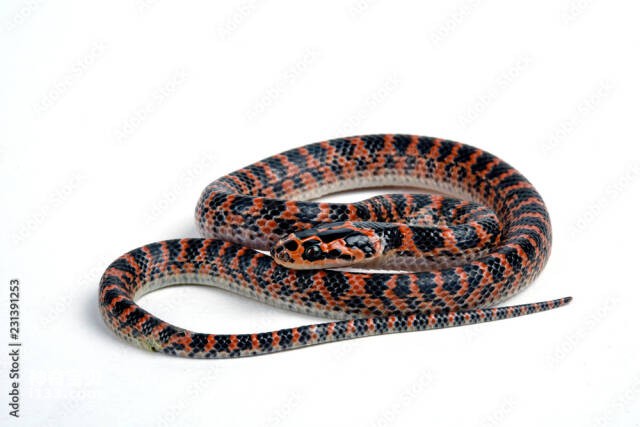
7. Red Chain Snake
The red-chain snake, also known as the fire-red chain snake, red-spotted snake, etc., is a reptile of the order Snake, Colubridae, and genus Chain Snake. Their heads are relatively flat and wide, their body length is generally about 1-1.5 meters, and their body shape is relatively slender. The pattern on the body is red and black, and the belly is yellow-brown, also with black stripes. However, the black stripes on its back and abdomen grow intricately and look very bright in color, making people think it is very poisonous. However, in fact, the venom of the red chain snake is minimal, and it can be said to be a slightly venomous snake, or even a non-venomous snake. In short, although red chain snakes look a bit "venomous", they are actually very docile snakes and do not pose much threat to humans.
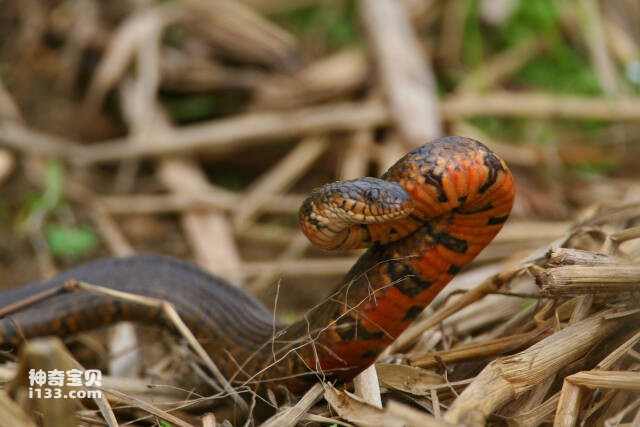
8. Red chain Chinese snake
Sinonatrix annularis (scientific name: Sinonatrix annularis) is a slightly venomous snake (cannot cause death), belonging to the genus Sinonatrix in the family Colloideae. It is widely distributed in Shanghai, Jiangsu, Zhejiang, Anhui, Fujian, Taiwan, Jiangxi, China. It is one of the species endemic to China in Hubei, Hunan, Guangdong, Hainan, Guangxi, Sichuan and other places. They often appear in and near rice fields, ponds, streams and other waters in East and South China, and their vertical distribution ranges from 100 to less than 1,000 meters above sea level. This kind of snake has multiple ring patterns all over its body, and the rings on the ventral surface are orange-red or orange-yellow. The front end of the internasal scale is very narrow, and the nostril is located near the dorsal side. Usually only one upper lip scale enters the orbit. The type origin of this species is in Ningbo, Zhejiang. In short, the red chain snake is a very special snake. Although it is slightly venomous, it still needs sufficient attention and protection.
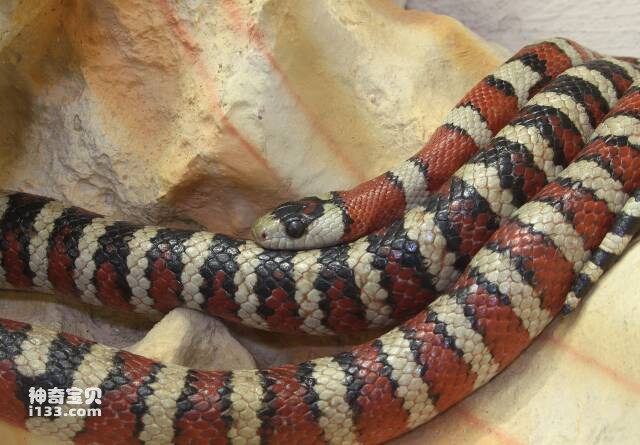
9. Mountain king snake
The mountain king snake (scientific name: Lampropeltis pyomelana) is a snake with a body length of about 100 centimeters. It likes to hide under fallen leaves and fallen trees near water. They are mainly distributed from southern Arizona to northern Mexico, and inhabit mountainous coniferous forests and shrublands below 2,700 meters above sea level. The snout of this snake is white, the body is mainly red, with white or yellow-white markings, and the back has black rings. In short, as a kind of snake that lives in mountainous areas, the mountain king snake has attracted much attention and love due to its unique color and markings.
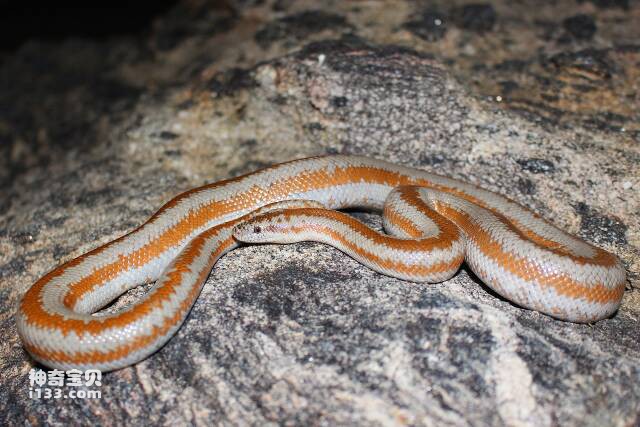
10. Mexican Rose Red Python
The Mexican rose boa is a stout boa constrictor with a narrow head and thick, blunt tail. The snake's body is light gray or yellowish in color and covered with wide dark brown stripes from head to tail. These stripes may be very clear or they may be blurry. The Mexican rose boa is mostly found in northwestern Mexico. It is good at climbing high places and is commonly found in shrubs and semi-desert areas. They feed on small birds and mammals and are very predatory snakes. In short, the Mexican rose boa, as a large and colorful python, has great ornamental and ecological value.
When encountering a venomous snake, first do not panic and stay calm. Here are some tips for dealing with venomous snakes:
1. Stay away from venomous snakes as much as possible: If you find a venomous snake, please try to keep your distance and stay away from it to ensure your own safety.
2. Avoid harassing or attacking venomous snakes: Venomous snakes may act aggressively when they feel threatened. Therefore, do not attempt to harass or attack a venomous snake.
3. Do not attempt to catch or handle venomous snakes: Handling venomous snakes is very dangerous and may even be fatal. So don't try to catch or handle venomous snakes.
4. Back away slowly: If you find a venomous snake, please back away slowly and ensure your own safety.
If you are bitten by a venomous snake, you should seek medical attention immediately. While waiting for rescue, you can perform the following first aid measures:
1. Do not move the injured part and try to minimizecirculates blood and prevents the spread of venom.
2. If possible, use a compression band to relax the blood vessels above the wound.
3. Activities will accelerate the spread of venom, so you need to stay quiet and go to the hospital as soon as possible.
animal tags:
We created this article in conjunction with AI technology, then made sure it was fact-checked and edited by a Animals Top editor.